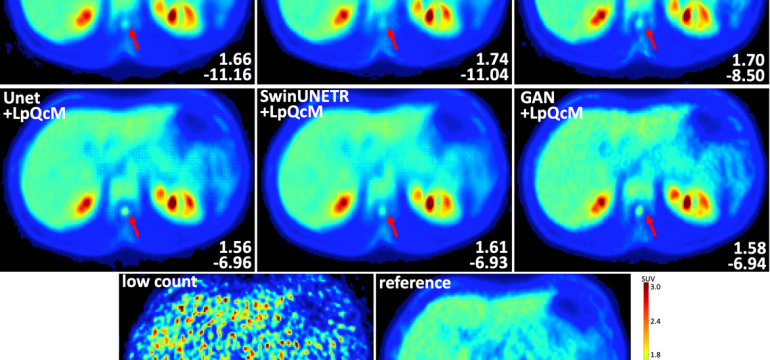Authors: Menghua Xia, Huidong Xie, Qiong Liu, Bo Zhou, Hanzhong Wang, Biao Li, Axel Rominger, Kuangyu Shi, Georges EI Fakhri, Chi Liu
Published on: April 27, 2024
Impact Score: 7.8
Arxiv code: Arxiv:2404.17994
Summary
- What is new: A lesion-perceived and quantification-consistent modulation strategy for PET image denoising that enhances lesion visibility and quantification accuracy without extra computational cost during inference.
- Why this is important: Existing PET image denoising methods blur important details, leading to inaccurate lesion quantification.
- What the research proposes: The proposed LpQcM strategy improves the denoising process by focusing on lesion visibility and accurate quantification across different noise levels and datasets.
- Results: Integrating LpQcM reduced the lesion SUVmean bias by 2.92% and increased the PSNR by 0.34 on average for extremely low-count images.
Technical Details
Technological frameworks used: A plug-and-play LpQcM strategy adaptable to various model architectures.
Models used: Auxiliary segmentation networks for lesion detection, multiscale quantification-consistent modulation.
Data used: Large PET datasets from multiple centers and vendors with varying noise levels.
Potential Impact
Healthcare imaging departments, PET imaging technology companies, and medical diagnostics firms.
Want to implement this idea in a business?
We have generated a startup concept here: ClearVision AI.




Leave a Reply